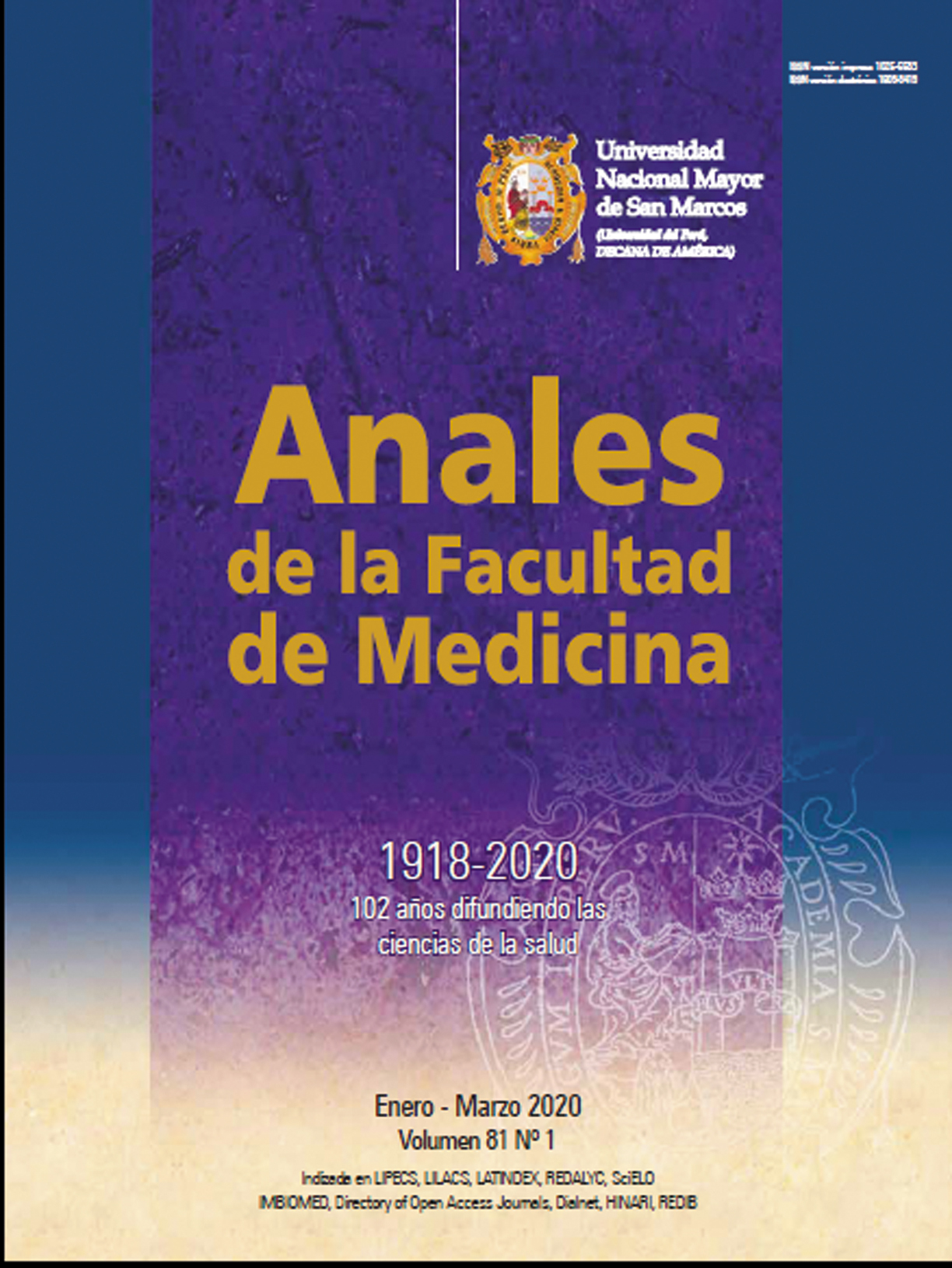Reduction of cardiovascular risk in professionals from a specialized health institute by a cardiovascular preventive program
DOI:
https://doi.org/10.15381/anales.v81i1.17328Keywords:
Cardiovascular Diseases, Cardiac Rehabilitation, Program Evaluation, Occupational HealthAbstract
Introduction. The cardiovascular rehabilitation programs (CRP) represent an effective multidisciplinary medical-health strategy in prevention and control of cardiovascular problems. Objective. To assess the impact of a CRP carried out in the workplace, in reducing absolute cardiovascular risk in INCOR workers. Methods. An experimental study. 41 workers with different levels of cardiovascular risk were included and were evaluated before and after their participation in the CRP on their functional capacity, cardiovascular risk factors and stress levels. The work intervention program consisted of 36 sessions of controlled physical activity, nutritional counseling, psychological counseling and laboratory evaluation. Results. The intervention get a reduction of the overall cardiovascular risk to the low level in all workers (100%), measured by the Framingham index and when it was measured with the ASCVD 2013 score, the high-risk level was eliminated and the intermediate level was reduced from 17,5% to 10%. The functional capacity shows an improvement, with an increase of cardiovascular risk level I from 19,5% to 90%. Blood lipids levels as VLDL, LDL, total cholesterol and triglycerides were significantly reduced in the post-intervention. Contrarily, in the HDL levels, the proportion of workers with non-recommended values increased to the end of the intervention. Finally, the CRP showed effectiveness in reducing workers’ stress. Conclusion: A CRP could to be implemented on workplace and it shows effectiveness in reducing cardiovascular risk and stress.
Downloads
Published
Issue
Section
License
Copyright (c) 2020 Anales de la Facultad de Medicina

This work is licensed under a Creative Commons Attribution-NonCommercial-ShareAlike 4.0 International License.
Those authors who have publications with this magazine accept the following terms:
- Authors will retain their copyrights and guarantee the journal the right of first publication of their work, which will be simultaneously subject to Creative Commons Attribution License that allows third parties to share the work as long as its author and its first publication this magazine are indicated.
- Authors may adopt other non-exclusive licensing agreements for the distribution of the version of the published work (eg, deposit it in an institutional electronic file or publish it in a monographic volume) provided that the initial publication in this magazine is indicated.
- Authors are allowed and recommended to disseminate their work over the Internet (eg: in institutional telematic archives or on their website) before and during the submission process, which It can produce interesting exchanges and increase quotes from the published work. (See El efecto del acceso abierto ).



